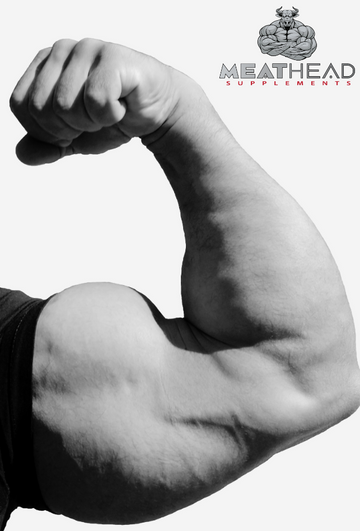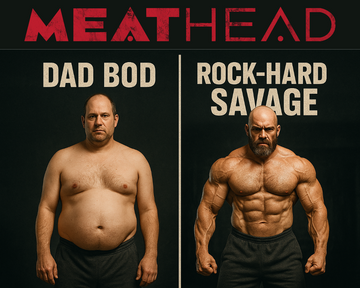When it comes to building the biggest arms humanly possible, it’s not just about curling dumbbells in front of the mirror. It’s about intensity, strategy, and an unrelenting approach to arm training that goes beyond the ordinary. If you want to grow arms that are too big to fit in standard sleeves, it’s time to ditch the "just another arm day" mentality and commit to an extreme training regimen. This isn’t for the faint of heart—but if you’re ready, let's get started.
1. Understand the Anatomy of Your Arms
The upper arm is divided into two major muscle groups: the biceps brachii (front of the arm) and the triceps brachii (back of the arm). To get truly massive arms, the key lies in emphasizing both muscles equally, not just your biceps.
-
Biceps: This muscle is made up of two heads—the short head (inner bicep) and the long head (outer bicep). Both must be trained with varying exercises to target the full muscle.
-
Triceps: The triceps make up about 2/3 of your upper arm’s size, so if you’re focusing only on curls, you’re missing out. The three heads of the triceps (long, lateral, and medial) need focused training to maximize growth.
2. Progressive Overload: The Bedrock of Arm Growth
Your arms won’t grow unless they’re given a reason to. Progressive overload is the key principle for arm hypertrophy. This means continually increasing the weight you lift, the reps you perform, or the intensity you apply during your workouts. The key is to push your arms to the limit.
- Increase Volume: Add more sets to your workout routine over time.
- Increase Intensity: Utilize advanced techniques like drop sets, supersets, and forced reps.
- Increase Load: Gradually lift heavier weights.
Pro Tip: Aim for an 8-12 rep range with heavy weight for hypertrophy. Once you can easily hit 12 reps, bump up the weight.
3. Maximize Training Frequency
If you want to build the biggest arms possible, training them just once a week isn’t going to cut it. Arms, especially the biceps and triceps, can handle more frequent training than larger muscle groups like legs or chest.
- Train Arms 2-3 Times Per Week: Target them directly, but allow at least 48 hours of recovery between sessions.
- Integrate Arm Work into Compound Movements: Exercises like bench presses, overhead presses, and rows already engage the arms. Maximize these lifts by focusing on controlled, explosive movement that fully engages the biceps and triceps.
4. Prioritize Heavy Compound Movements
While isolation exercises like curls and extensions are great, they aren’t enough on their own to build serious arm size. Compound movements recruit more muscle fibers and promote overall growth.
- Close-Grip Bench Press: One of the best mass-builders for triceps.
- Weighted Dips: Targets all three heads of the triceps for complete arm development.
- Chin-Ups and Pull-Ups: Add weight to challenge your biceps.
- Barbell Rows: Great for overall arm thickness.
5. Go Big on Isolation Movements
Compound movements are crucial, but you’ll still need direct arm work to fine-tune your muscles. Here’s the gold standard for building both size and definition:
For Biceps:
- Barbell Curls: Go heavy to build overall mass.
- Preacher Curls: Focus on form to isolate the biceps.
- Hammer Curls: Target the brachialis for more width and thickness.
- Incline Dumbbell Curls: Stretch the long head of the biceps for full development.
For Triceps:
- Skull Crushers: A killer mass-builder.
- Overhead Tricep Extensions: Hit the long head of the triceps.
- Tricep Pushdowns: High reps and strict form will torch the lateral and medial heads.
- Dumbbell Kickbacks: Perfect for adding definition.
6. Optimize Your Nutrition for Growth
If you’re not eating to support muscle growth, your arms won’t grow no matter how hard you train. Building bigger arms requires a caloric surplus and high protein intake to fuel recovery and muscle hypertrophy.
- Protein: Aim for at least 1.0-1.2 grams of protein per pound of body weight.
- Carbohydrates: Complex carbs are essential for energy. Focus on foods like oats, sweet potatoes, and rice.
- Fats: Healthy fats from sources like avocado, olive oil, and nuts will help hormone production and joint health.
Make sure you’re fueling your body with enough calories to grow, but don’t get sloppy—keep those calories clean to avoid adding fat.
7. Rest, Recover, and Repeat
Recovery is where the growth happens. To maximize your arm size, you need to be strategic about your rest.
- Sleep: Aim for 7-9 hours of quality sleep every night.
- Active Recovery: Light cardio or stretching between arm days can keep blood flow going without straining the muscles.
- Deload Weeks: Every 4-6 weeks, take a week where you reduce weight and intensity to allow your arms to fully recover and prevent burnout.
8. Stay Consistent and Push Beyond Limits
Building arms that turn heads requires discipline, hard work, and an obsession with pushing past your limits. It’s easy to hit plateaus, but the true test of your dedication is how you respond when growth slows.
- Keep Changing: Don’t let your routine go stale. Incorporate new exercises, angles, and rep schemes every few months.
- Track Your Progress: Log your lifts and measurements. Nothing beats the motivation of seeing steady increases in both strength and size.
- Train Your Mindset: Training isn’t just about moving weights—it’s about the mental grit to push through pain, fatigue, and stagnation. Stay laser-focused.
Final Thoughts: Embrace the Grind
Building the biggest arms humanly possible isn’t just a physical battle—it’s a mental one. Success in the gym is about consistent effort, smart programming, and an unshakable mindset. If you’re truly serious about having the biggest arms in the room, there’s no shortcut. Train harder, eat smarter, and recover like a pro. Your sleeves won’t stand a chance.
It’s time to take your arm workouts to the extreme—there’s no limit to how big you can grow!





